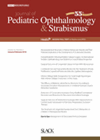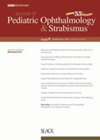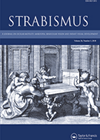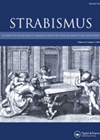
Journal Reviews
Causes and outcomes of eyelid lacerations
The purpose of this study was to characterise the epidemiology of paediatric eyelid lacerations, identify risk factors for canalicular involvement and describe postoperative complications after surgical repair. This was a retrospective review of tertiary care trauma centre records in which...
Eye disorders occurring in congenital CMV
The aim of this study was to examine the relationship between congenital cytomegalovirus (CMV) infection and ophthalmological disorders that occur in children and record the frequency and type of eye disorders that occur from the infection. Of 449 potential studies,...
Issues relating to declining numbers of paediatric ophthalmologists
The authors consider the economic decline of paediatric ophthalmology with a discussion of declining interest among medical graduates and in paediatric ophthalmology fellow numbers. Consideration is given to workforce issues in relation to poor revenue and an increase in the...
Survey of paediatric ophthalmology practice in the US
The purpose of this study was to develop a survey to assess possible solutions for an economic turnaround in paediatric ophthalmology. A 12-item survey was circulated with questions related to practice location, setting and years in practice. Responses were received...
Changes in the choroid after atropine for amblyopic and fellow eyes
The purpose of this study was to compare the effects of atropine on the thickness and structure of the choroid between amblyopic and fellow eyes. This study included 16 patients: five males, 11 females. Median age at ocular coherence tomography...
BT as a diagnostic tool in Duane’s retraction syndrome
This study evaluated the effects of botulinum-toxin (BT) on management of Duane’s retraction syndrome along with how BT can be used diagnostically to help with patient expectations and decide management. Functional and psychosocial impact of BT effect was evaluated in...
Ocular damage from laser pointers
This retrospective study of case notes from a tertiary eye centre over a five-year period, recruited nine children (12 eyes: eight boys) aged 9-15 years. Three presented with deteriorating vision whilst others had retinal changes noted as incidental findings at...
RetCam use in differential diagnosis for retinoblastoma
The authors aimed to evaluate RetCam fundus photography and fluorescein angiography (FA) findings in pseudo retinoblastoma. This was a retrospective review of 36 eyes of 28 patients (of which six were female) with 22 bilateral cases. Mean age at presentation...
Prism adaptation test in acquired non-accommodative esotropia
This study investigated factors related to the increase in prism adapted angle in patients with acquired non-accommodative comitant esotropia (ANAET) who had strabismus surgery based on the results of a short prism adaptation test (PAT) and evaluated their outcomes. Short...
Testing of binocular contrast sensitivity as an objective measure of severity in intermittent exotropia
The purpose of this study was to compare the binocular contrast sensitivity ratio (measured with the Vision CSV-100 vector chart) between 40 intermittent exotropia patients and 40 normal controls. The authors also evaluated the effect of intermittent exotropia compensation status...
Inferior oblique muscle features
The authors aimed to study and morphometrically define the surgical anatomy of the inferior oblique muscle and its variations, and to outline surgical coordinates to aid location of the inferior oblique origin and nerve supply to the inferior oblique muscle....
Acute comitant esotropia as the presenting sign of diffuse intrinsic pontine glioma
The authors present four children with acute comitant esotropia (AACE) associated with diffuse intrinsic pontine glioma. All were treated with radiation therapy and all subsequently died due to the tumour. Children were aged 5, 5, 4.5 and 11 years. General...








